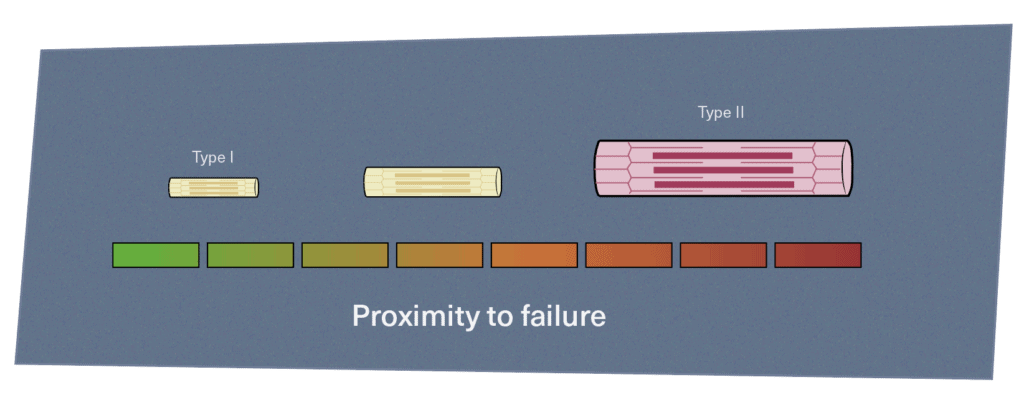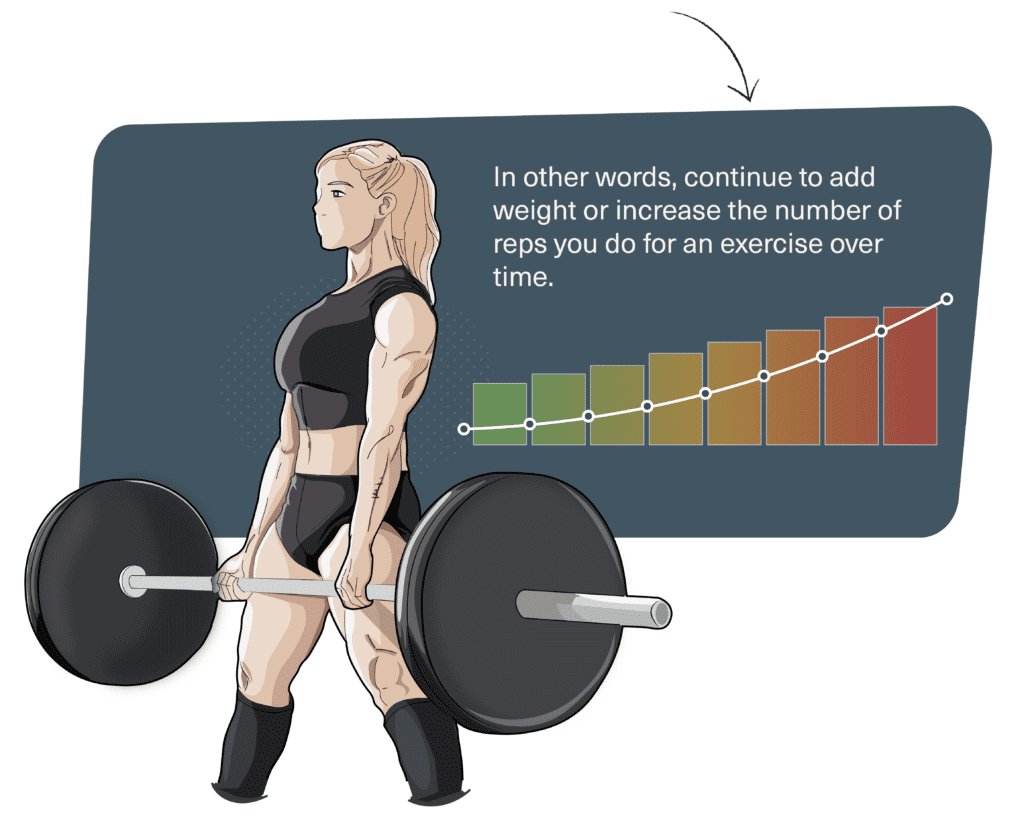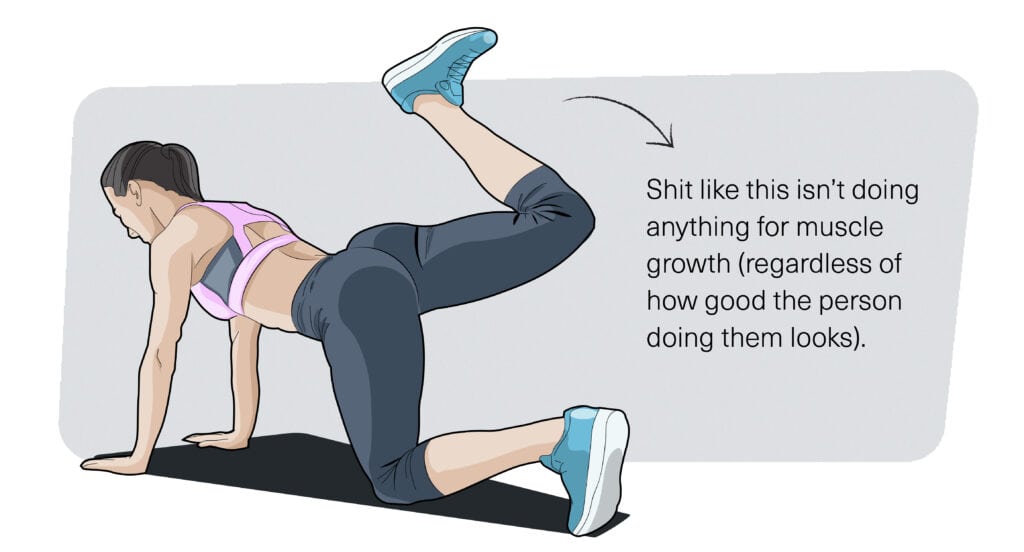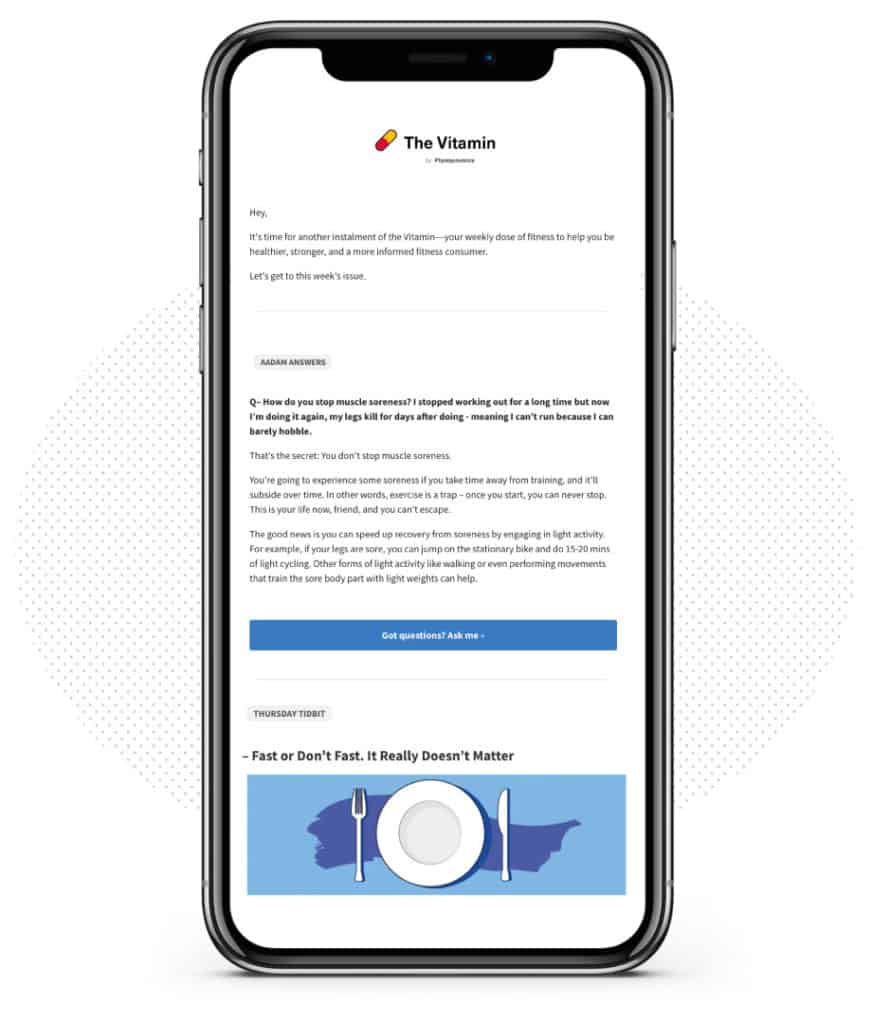In pursuit of the elusive ‘toned’ look, many people turn to various exercise routines and workouts marketed as toning solutions.
But here’s the thing: Toning isn’t real.
In this article, we’ll look at why toning a muscle isn’t a thing and dive into the key factors that contribute to achieving a toned appearance.
What muscle tone actually means
If we’re going to discuss this topic, it’s only right we get the definitions straightened out. So here’s the deal:
The term ‘muscle tone’ refers to the level of tension present in a muscle when it’s at rest, and it has nothing to do with how a muscle looks.
Right now, as you’re sitting reading this, you might be ‘relaxing’, but a small part of each muscle is still contracting, so you can sit up and look at your phone. If that weren’t happening, you’d be a big ball of human Jell-O dragging your ass across the floor.
With that out of the way, let’s address how most people think about ‘toning’: if you do certain exercises or lift super light weights for super high reps, you’ll magically change the shape of a muscle without getting ‘bulky’.
Yeah, that’s bullshit.
You can’t change the shape of a muscle; a muscle can only get bigger (or get smaller if it’s not used).
If you want to firm up your legs or arms or chest––you need to gain muscle in those areas while simultaneously losing fat. There are no exercises or workouts that will somehow overcome human physiology.
Oh, and this also applies when you hear the terms ‘long’ and ‘slender’ to describe muscle. It doesn’t mean what you think. A long muscle, for example, is when the muscle is fully lengthened (e.g. the bottom of a bicep curl).
In reality, when someone says they want to be more ‘toned’, they’re referring to the process of losing excess body fat while gaining (or maintaining) muscle to enhance the visibility of muscle definition.
And there are only three ways to achieve this:
- Lose excess body fat so the muscle you have is more visible.
- Gain muscle so you look more defined at a given body weight.
- Do a combination of both (lose fat while gaining muscle).
To better elucidate (good word) why you can’t change the shape of a muscle, let’s step back and briefly look at how muscles grow.
How muscle grows
Fundamentally, your muscles don’t ‘see’ load. They only recognise mechanical tension, which is a byproduct of intensity of effort (or proximity to failure).
As I explained in a previous article, the closer you get to failure, the more muscle fibers are recruited, which expose type II muscle fibers (the fibers with the highest potential for growth) to greater mechanical tension––the key stimulus for muscle gain.

When you lift heavier weights, you need to perform fewer reps to fully recruit all muscle fibers (because you’ll reach the point of failure sooner). When you lift light(er) weights, you need to perform more reps to fully stimulate all muscle fibers (because it takes more reps to reach failure).
And while it’s true you can build muscle using a wide range of reps, there’s a catch.
If you’re going to train with light loads, you still need to lift around ~30-50% of your 1-rep max (1RM). 1
In other words, if your 1RM is 100 lbs on a given exercise, you need to train with a load somewhere between 30-50 lbs for it to have any meaningful effect on muscle growth (or muscle retention).
But training intensity is only one-half of the equation. The other half is progressive tension overload.

Training hard for a week isn’t going to do anything. You need to train consistently over an extended period of time, combined with some form of progression, to stimulate muscle growth.
So, in a nutshell: For muscle growth (and/or muscle retention) to occur, you need to:
- Train at a sufficient intensity to put enough mechanical tension on the muscle for it to adapt and grow.
- Keep progressing your training in some capacity over time to keep those adaptations happening.
The way ‘toning’ is typically sold––lift super light weights (or no weights and just booty kickback your way to oblivion) with really high reps and keep doing this forever––is the antithesis of how muscle growth happens.

All said: Whether you train with light weights and high reps or low-to-moderate reps with moderate-to-high loads, the result will be the same: The muscle will get bigger (assuming you’re training with the right intensity and progressing over time).
As for changing the shape of a muscle–you can’t. Once you have a good amount of muscle mass, you need to get leaner so the muscle definition is visible. Ultimately, how your muscles look is going to be dictated by your genetics, and there isn’t anything you can do about that.
High reps for fat loss?
There’s another false belief that “high-rep, light-weight” training is more effective for burning calories, leading to greater fat loss. However, research doesn’t support this belief.
A recent study put 130 subjects (81 female; 49 male) through four weeks of heavy (~80% 1RM) or light (~60% 1RM) load resistance training while adhering to a 20% deficit with 1.5g/kg (~0.7g/lb) of protein. 2
At the end of the study, both heavy- and low-load training resulted in similar fat loss and muscle growth.
As the researchers explained:
This suggests that any previously identified difference in EE [energy expenditure] during- or post-resistance exercise resulting from heavier- or lighter-load training, does not translate to differences in reduction of fat mass (kg) or body fat percentage over the course of longitudinal intervention.
How to actually get ‘toned’
Now that we’ve established toning is pretty much bullshit, we can get practical and look at how you would achieve a leaner physique in a way that works.
1. Determine the appropriate goal for where you are right now
Do you need to lose fat or build muscle? Or would a recomp be a better approach? This can be a bit tough to figure out, but my general guidelines are:
- Fat loss:
- Men over 15% body fat
- Women over 25% body fat
- Build muscle:
- Men who are <10%–15% body fat
- Women who are <18%–24% body fat
- Recomp:
- You’re a beginner to weight training (<6 months of proper weight training) and your body fat percentage is between 13-18% (male) or 24-27% (female).
2. Use the right approach for your goal
Once you’ve determined your goal, you’ll need to set up a plan that allows you to progress toward that goal.
- Fat loss: Aim to lose between 0.5–0.7% of your total body weight per week.
- Muscle gain: Aim to gain 1-1.5% of your total body weight per month. Note: This recommendation is given under the assumption you’re a beginner to weight training and thus lacking muscle mass.
- Recomp: Target maintenance intake.
As for training: Focus on resistance training 3-5x/week (depending on your preference, schedule, etc.) and ensure you’re approaching it intelligently.
Specifically, this means doing the right amount of weekly volume for you, training with adequate intensity, and implementing progressive tension overload in some capacity over time. To learn more about how to program resistance training properly, read this.
And that’s it.
Everything else you hear about special training plans, unique exercises, or magic diets that can help you get ‘toned’ is a piling heap of nuclear bull manure.
Remember what I said earlier: A ‘toned’ physique is a combination of having enough muscle and low enough body fat for the muscle to be visible. And the recommendations above will help you do just that.
Thanks for reading. If you enjoyed this, you’d love the Vitamin

95% of my new content is only sent to my email list. One email every Thursday, filled with actionable, evidence-based fitness advice to help you with your goals. If you enjoyed this, you’d love my emails. You can learn more and subscribe for free here.